Using Tarot Mythology to Unmask the Emperor Within
Archetypes Help Us Understand Ourselves, Our World and Our Conflicts
We have not even to risk the adventure alone for the heroes of all time have gone before us. The labyrinth is thoroughly known. We have only to follow the thread of the hero-path…
-Joseph Campbell
Often derided as a fantasy or a con, Tarot has a fascinating and storied history. It has survived such slings and arrows and much censorship over centuries.
Tarot as an occult device has persisted so long, about 350 years, for good reason. To many, its framework embodies an appealing, evolving mythology helpful to untangle conflicts, to make sense of problems blurred by fears, temptations and interests. That Humankind continues to use it as a form of psychological therapy over such a span is a testament to its durable appeal and usefulness (both as a grift and a legitimately helpful tool.)
As a living, evolving mythology, Tarot is useful from a Joseph Campbell-like analysis to shed light on the conflicts of modern society. Most great religion’s mythology unfortunately is locked in immutable sacred texts and dogma, with many parties interested in perpetuating these mythologies in ancient, unchanged forms. Their wisdom as such is often better suited to times past especially taken literally, whereas living mythologies update as necessary to remain compelling.
So, Tarot can be harnessed to extract modern wisdom, subconscious and conscious, about ourselves and one another as we navigate the world around us, and enter new territory, new challenges and life phases as individuals but also with new technologies and developments as a culture. Tarot is also an excellent device, so visual and symbolic, to demonstrate the usefulness of Campbell’s mythological analysis intuitively. This essay uses the framework of Tarot mythology to glean insights into our global conflicts around authoritarianism, particularly as Emperor Putin wages hybrid WWIII against the Western Liberal establishment upholding the world order.
As a living mythology in a largely mythologically rudderless culture, Tarot is currently having a comeback moment in our modern world desperately seeking answers and meaning. Some examples: Philly Tarot is all the rage around here, and HBO’s White Lotus recently featured Tarot when the tragically spoiled and hammered (and Empress-like) Tanya seeks an “old world Gypsy” but ultimately rejects her advice.
Healthy skepticism regarding divination in Tarot, that the order in which cards appear are guided by supernatural forces, is rational and warranted. I am not a believer, to be quite frank. However, the mythological framework does not depend on divination and is useful in any case.
In my estimation, it is the focused exercise, the deliberate process of contemplating one’s troubles intentionally with the help of an experienced specialist, who might consider different potentials and pitfalls, that is helpful to the seeker. Particularly helpful is the use of archetypal imagery which provides abstract framework. That is, it is far easier to consider one’s issues if they are placed in context outside of one’s existing conceptions, so entangled in one’s interests, impulses and emotions, clouding judgements. A little distance and perspective can help one see problems more clearly. This is especially valid combined with the idea that readings are meant to be one possibility of what might occur, not a set-in-stone prophecy. Without belief in divination, Tarot becomes an exercise in contemplating possibilities, helping to clarify thoughts and feelings.
Comparative mythology guru Joseph Campbell argued early forms of Tarot decks sprung primarily from one particular Hero’s Journey - the medieval literary mythology depicted in Dante’s 14th-century masterpiece, Divine Comedy, including his trip through hell, aka Dante’s Inferno. In his analysis of the Marseilles Deck, tracing deck lineage as far back as 1392, Campbell concludes that these represent a mythology, a medieval conception of society and consciousness, both Earthly and supernatural.
Campbell notes that the original 4 suits (swords, cups, coins, and rods) represent the 4 estates, the classes of medieval society. Fittingly, the swords represent the nobility, who held power through swords and were ultimately responsible for upholding security and order; the cups for clergy, like the Christian chalice of the Catholic Mass (or Holy Grail of medieval legend); the coins for the merchant and tradesmen; and the rods for the peasants and servants. This would have been quite self-explanatory to the nobles who originally played parlor games with these decks. In Marseilles deck imagery, these suits are associated with the medieval elements: air (swords), water (cups), earth (coins), and fire (rods). These would later evolve into more familiar spades, hearts, diamonds, and clubs, devoid of symbolic reference to elements or social classes for more modern sentiments in modern playing card decks.
Interestingly, the suggestion is that just as the four elements compose the Universe, these four classes are the essential forces of human society, the necessary order of things. Campbell reminds us, however, the games were originally developed by and for the nobility, the Swords, the political leadership and therefore their biases and prejudices are baked in. Meanwhile, nearly all surviving records of these early decks are in the form of sermons against it from the Cups, the clergy, the spiritual and emotional leadership. This demonstrates a natural tendency, especially back in the day when Emperors ruled the globe: for political leadership to push their own biased understandings of the world onto everyone, often brutally, even if society’s spiritual/emotional sides bitch about it.
For modern Tarot practice, the swords, cups, coins/pentacles, and wands have evolved to represent forces of intellect, emotion, material, and creative-will-energy, respectively. Same as modern card decks, Tarot decks generally have numbered cards ace through 10 of each suit. Both the ancient Marseilles deck and most modern Tarot decks include a Knave (aka a Page), a Knight (who would be served by the Knave), Queen, and King. No “Jacks.” Campbell notes each represent increasing levels of power in each suit’s realm, “spiritual, as well as social power,” with each card in service to all higher ranks above it in a truly feudal, medieval fashion. These 56 cards are known as the “The Minor Arcana.”
Additionally, Tarot decks contain a series of 22 trump cards, “The Major Arcana,” depicting “The Fool’s Journey.” Interestingly, Campbell does not directly liken the Fool’s Journey to that of the Hero’s, the mono-myth, other than in its similarity to Dante’s Divine Comedy mythology, a Hero’s Journey itself. But there are striking parallels which I will discuss later, which make Tarot decks uniquely intuitive devices to explore elements of the Hero’s Journey.
Campbell would argue from a different perspective - that to the medieval audience, following Dante’s mythology, these Major Arcana cards would represent higher forces than the more ordinary Minor Arcana, all with power and control over the more ordinary. These start with the Magician (or Juggler) displaying mastery over the 4 elements of the Minor Arcana in the card imagery, and move on to High Priestess, Empress, Emperor, and Pope and evolve to 16 higher states from there, as will be discussed below. Campbell suggests the first 5 cards of the Major Arcana correspond to the medieval conception of the Childhood/Adolescent phase (0-25), later graduating to Maturity (25-45), Age, Decrepitude and beyond as depicted in Dante’s writing.
From here, however, we’ll venture past Campbell’s analysis of the medieval Marseilles deck and focus on more modern practice and application. Having covered some of the origin, evolution, and overall structure of the Tarot framework, we can now focus on using the Fool’s Journey to shine light on Campbell’s Hero’s Journey, as well as Tarot’s application to modern issues. Here, we will focus on the Rider-Waite deck, today widely considered the modern ‘gold standard’ Tarot deck, developed in 1909.
Key differences between the Hero’s Journey and the Fool‘s exist, of course. Heroes’ journeys depict extraordinary individuals modeling virtues and success. The Fool’s Journey is modeled upon average, imperfect humans experiencing life, expanding consciousness of the world around us as we grow. As such, the Fool’s Journey frames the same archetypes but sometimes from a very different angle and with a more every-man perspective more subject to folly. Also, the first cards of the Major Arcana are particularly analogous to infant and early childhood psychology, whereas Hero’s journey’s typically start later in life.
The Fool’s Journey starts with the Fool - totally ignorant of life’s dangers and horrors, both a blessing and a curse. But such total ignorance of the world and unbridled hopefulness cannot last long. This is analogous to a newborn baby, a Tabula Rasa. But it is also analogous to the start of any endeavor.
The next cards in the series are the Magician and The High Priestess. These represent the dual elements of the next “magical thinking” level of consciousness.
A familiar example of such thinking in our development are babies not yet developed a comprehension of persistence of vision entertained by playing ‘peek-a-boo.’ To this consciousness, covering one’s eyes makes one’s world disappear. So, playing peek-a-boo is so entertaining as it becomes a matter of destroying and creating worlds or people to the baby consciousness — dramatic!
Another perspective on this magical archetype is informed by the realization that sufficiently advanced technology appears as magic to less sophisticated observers. So perhaps in the eyes of the Fool and Minor Arcana, lower on Tarot’s hierarchy, the Magician appears a powerful being with control over supernatural forces. But to more sophisticated consciousness, the Magician appears more a juggler with some tricks up his sleeve.
Next in the Major Arcana are then the Empress and Emperor. Here, we come to the hard realization we are not the centers of our universe, and we graduate to a toddler’s consciousness. Although we are born programmed to fundamentally love Mothers or caregivers and immediately implicitly seek their warmth, scent, nourishment, and comfort, it is not until this next phase we become aware other beings hold authority and power over us. Here, we first understand that we do not command our caregivers with our cries but rather appeal to them. We first recognize Mother, the Empress, then Father, the Emperor. It is in this phase we form our first conceptions of gender and authority, generally extreme and juvenile, black and white.
As a toddler views archetypal male authority, the Emperor’s most prominent features are his unhappy gaze, rigid upright stance on his stone throne, and his donning full plate armor. These suggest deep fear and insecurity, both physical and emotional. Gripping his scepter and globe, the Emperor’s domination, rigidity, and power are palpable. The 4 ram’s heads on the throne symbolize Ares/Mars, the classical War God. The Emperor is clenched up pretty good alright.
Of course, there are also wonderfully positive aspects of the father and maleness too, and these arise mostly further along the Fool’s Journey. The Emperor is one that is extreme in his masculinity, and has ultimate power combined with the will to use it, often without hesitation and without regard for others. More positive modern interpretations, therefore, hinge on the order and position the Emperor card is presented, whether the card refers to an internal or external force. If the Emperor is internal, that is, the person seeking guidance is Emperor of a certain domain and is appropriately non-abusive, the Emperor may be wholly positively interpreted. Such positive aspects include mastery, conviction, discipline, control, leadership, and will. But this is considerably more rare than the Emperor acting as an imposing external force, imposing unwanted domination on the seeker.
Juxtaposed to the Empress, it’s more clear the barren rocky landscape devoid of life surrounding the Emperor. The river, tiny at his feet, appears the only point of hope in the desolate landscape. It apparently connects him and the Empress, suggesting following that river (emotional-spiritual water element) towards more balance might lead to less desolation. It looks like she too could maybe use the Emperor’s help - cutting that lawn and reaping that grain.
Following the Emperor is the Hierophant, aka the Pope. This last stage of early childhood deals with accepting a teacher or schooling, coming to terms with rules imposed by others outside the household, and adopting a belief system to become part of a group or society. Note these impulses are a stage beyond the Emperor, too immature or stuck within his security structures to venture further.
17 more cards remain to complete the cycle:
The Lovers — sexual awakening/attraction but also separation and tension
The Chariot — detached power, driving assertiveness, youthful confidence, carelessness
Strength — mastery, control of powerful forces to render them safe, emotional strength, compassionate leadership
The Hermit — self-denial, solitude, search for higher knowledge or teacher, requiring active contemplation after experiencing the world
Wheel of Fortune — interconnection, karma, finding spiritual center, sense of purpose
Justice — cause and effect, responsibility and balancing to reach a decision
Hanged Man — sacrifice, suspension, realization, letting go
Death — change, endings, transition to a new way of life
Temperance — balance, acceptance, health, grace
The Devil — hopelessness, ignorance, imprisonment, persistent connection to the Earthly/material
The Tower — conflict, chaos, crisis, revelation, escape from hell, bridging Heavens and Earth
The Star — hope, beauty, openness, inspiration, serenity
The Moon — dreamworld, facing the subconscious, illusions, and creativity
The Sun — naked truth, assurance, freedom, vitality, simplicity
Judgement — rebirth, absolution, release, total transparency
The World — enlightenment, achievement, fulfillment, accomplishment
The Fool — Completing the cycle, the fool again is fearless. But this stems now not from ignorance but rather due to complete self-awareness.
(Much of the above card meaning summary is stolen/paraphrased from here and here)
The Temperance card also clearly stands out in juxtaposition to the Emperor. A radiant angel, she stands in the river, one foot in the water and one on Earth, also straddling the desolation of the Emperor’s world on one end and the overgrown fertility of the Empress’s on the other. With 2 cups pouring water from one to the other, she shows particular mastery over the emotional-spiritual water element. She represents balance, acceptance, grace, and health in stark contrast to the Emperor’s single-minded self-interest.
Taken all together, the nature of the Emperor becomes clearer. This dominating archetype is not well suited to our 21st-century Western, free society, which demands equal rights and rule of law while rejecting such concentrated wielding of political power. However, several actual Emperors remain in the East, most notably Russia’s Putin, Saudi Arabia’s MbS, Iran’s Ayatollah, North Korea’s Supreme Leader Kim, and China’s Xi.
As discussed in earlier articles:
This is all because Emperors seek to protect their unfair and undeserved vast concentrations of power and wealth. These modern Emperors see the writing on the wall that Liberality (with some degree of Justice and Temperance, balance) and the great energy transition being pushed by Liberal free nations threaten these. As such, in their metaphorical armor and ruling over their desolate Empires, like dragons, they pursue schemes to secure the continuation of their rule and necessarily must corrupt Liberality to achieve success with this strategy.
We must remember the Emperor is in a rather low state of consciousness analogous to a toddler’s. Metaphorically, on a spiritual level, it is still virgin, not yet met the Lovers, and not even initiated into the Pope’s conception of human decency, let alone struggled to determine (or even considered) his own conception of such decency, as does the Hermit. Decency is not a primary consideration to the tyrant Emperor - his unfettered power makes it unnecessary in his eyes. What matters to the Emperor is only that his own interests are served. Much expansion of consciousness is necessary to achieve full mastery of the emotional elements, as represented by the Temperance card; let alone the full enlightenment of the highest levels of consciousness, represented by The Sun, Judgement, and The World.
Given Humankind’s advanced state of technological development, such leadership is becoming untenable if we are to co-exist with WMDs, AI, drone warfare and a need to resolve an enormous threat posed by rapid climate change. These are not minor issues, they are major ones threatening to every human and our Earth, particularly given the state of weapons technology — mutually assured nuclear annihilation remains a prevailing strategic framework among Great Powers that keeps Humankind on a knife’s edge of apocalypse at any moment. Unaccountable leadership, especially in the Great Powers of Russia and China, makes international law fundamentally unenforceable and global institutions like the UN less effective than required to efficiently deal with our 21st-century global conflicts.
It might be wise to remember what a world run by Emperors looks like, the world from which Dante’s and subsequently Tarot mythology emerged. Before human rights and rule of law, the world was far more brutal, unjust and atrocity-filled.
Vlad Tepes (the Impaler), a 15th C. Romanian ruler and the inspiration for Dracula, infamously feasted as his impaled victims suffered.
Wrapping this up, it is useful to overlay the Hero’s Journey, even if the framing and perspective is a bit different. The Fool’s Journey models the same archetypes as the Hero’s, although from a different perspective:
Convincingly, the Fool’s Journey overlays onto the Hero’s very neatly. One might question whether the Emperor truly corresponds with “The Refusal of the Call” stage of the Hero’s Journey. Going back to the source, Campbell notes in The Hero With 1000 Faces:
The denial and the resistance to the call are important steps in the journey of the hero. They demand an inner decision . . . refusal is essentially a refusal to give up what one takes to be one’s own interest. The future is regarded not in terms of an unremitting series of deaths and rebirths, but as though one’s present system of ideals, virtues, goals, and advantages were to be fixed and made secure.
This close-minded, domineering, fear-paralysis conjures the Emperor exactly! And it very much indicates exactly why our global leadership should not be stuck in this lowly state of consciousness - it is our security structures and juvenile attachments, deep fear of the world that holds us back and keeps our consciousness from evolving and expanding, as we must to face global challenges responsibly.
Being stuck refusing the call and never embarking on a higher journey is the saddest fate of all, leaving the Emperor at home, uninitiated, stuck in his security structures, and unable to evolve further. It is striking that the psychological warfare conducted on 4chan and elsewhere online appears to seek to poison young male minds and lock up the ‘involuntary celibate’, Gamergate, alt-right crowd in that juvenile, dominating Emperor phase. This brings the point home — the Emperor does indeed exist within all of us — to defeat the real external Emperors, we must not let them corrupt us into reducing our consciousness to the un-empathetic, cartoonish-ly male, and unbalanced clenching that underlies the Emperor’s dominating attitudes. We must instead embrace Temperance in all the beauty, moderation and balance she embodies. It is the Emperor within us that threatens us most, even if it is external Emperors attempting to shrink us down to their level with their psychological warfare and machination.
Indeed, completing the quote from the beginning of the article, Joseph Campbell drives the point home:
. . . where we had thought to find an abomination, we shall find a god; where we had
thought to slay another, we shall slay ourselves; where we had thought to travel outward, we shall come to the center of our own existence; and
where we had thought to be alone, we shall be with all the world.
Click below to hear more from Mr. Campbell…
(HAPPY NEW YEAR! Let’s make 2023 a great one for Temperance, Moderation and a bad one for Emperors 🥂🥂🥂💕💕💕
And a very warm and sincere thank you to Alexis Pappas, my beautiful wife, for her help editing and contributing to the understanding of Tarot in this article😘)
Up Next:
Please interact! Send some love and let me know if you appreciated or could improve upon my ideas by using one of the buttons below.


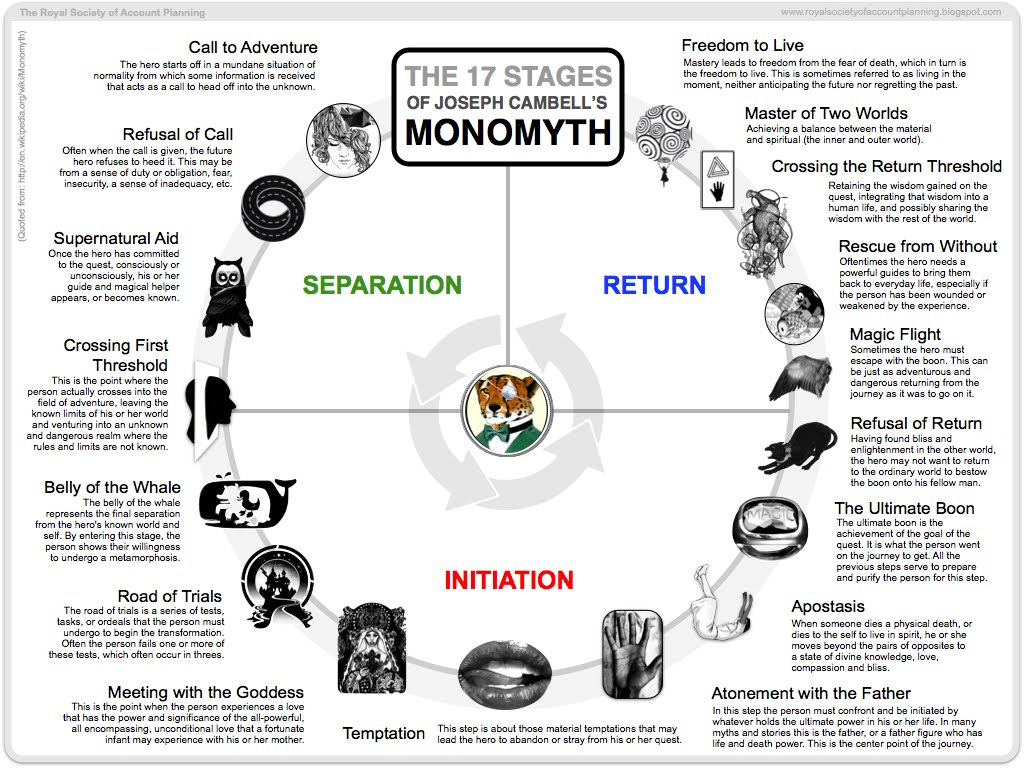
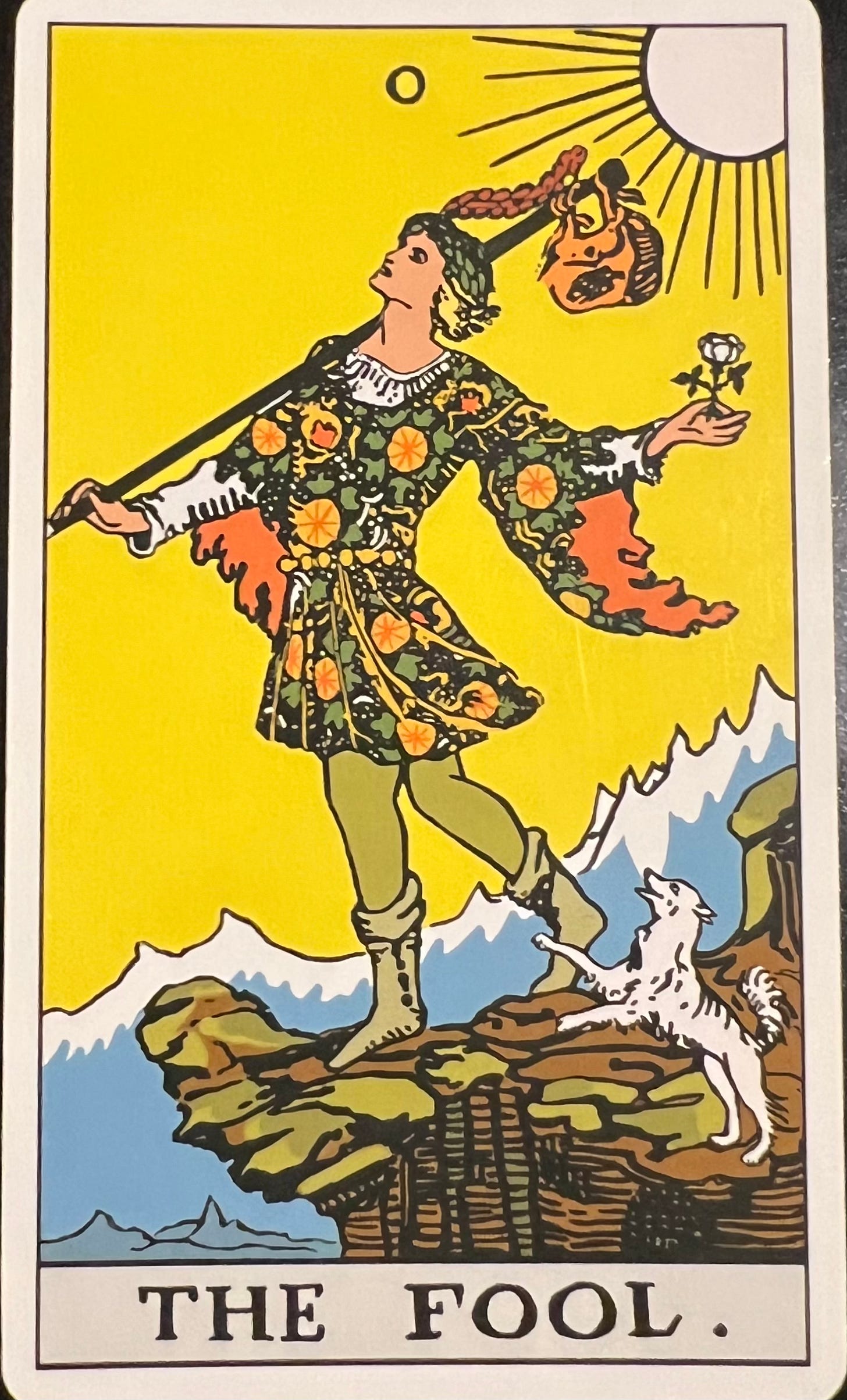
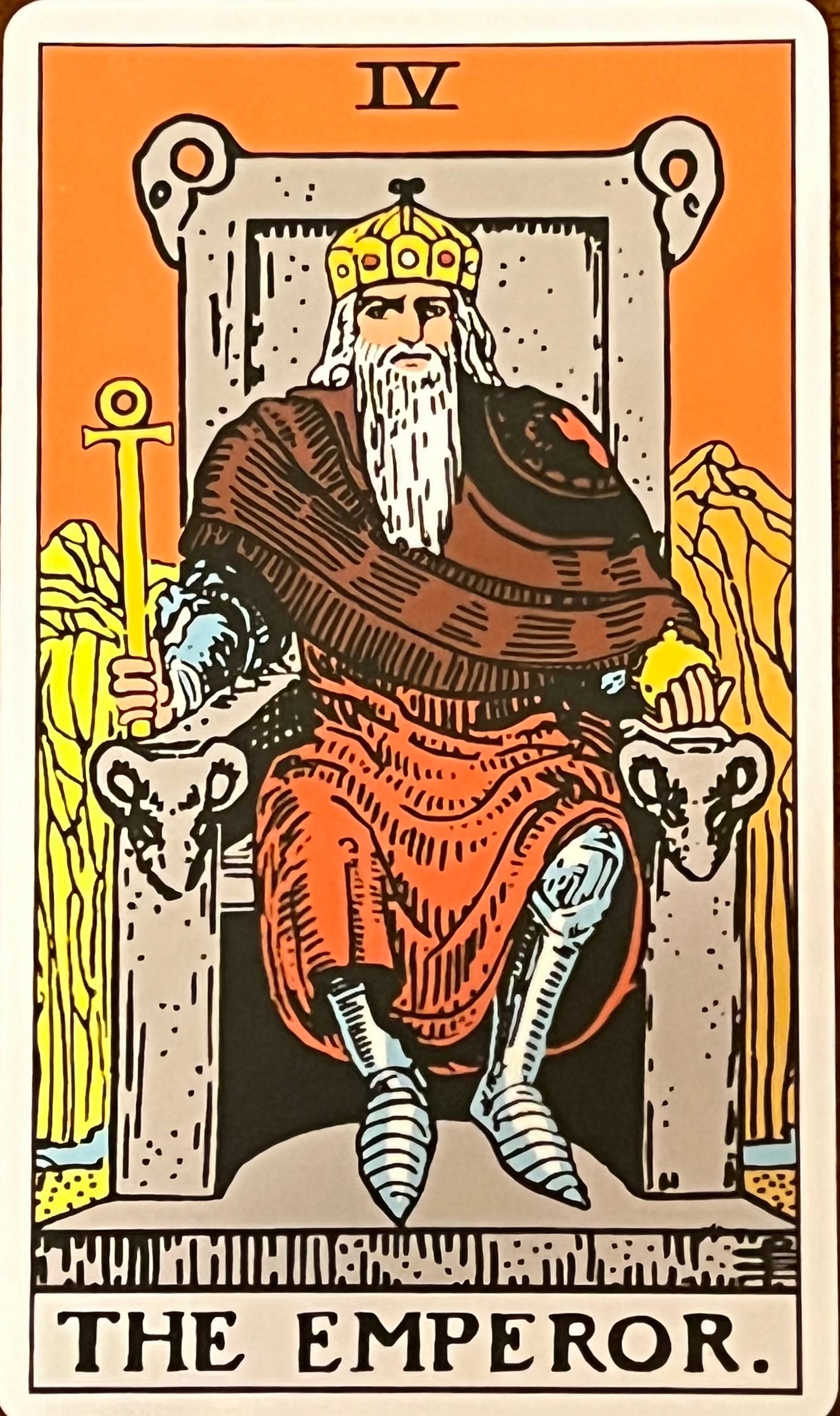
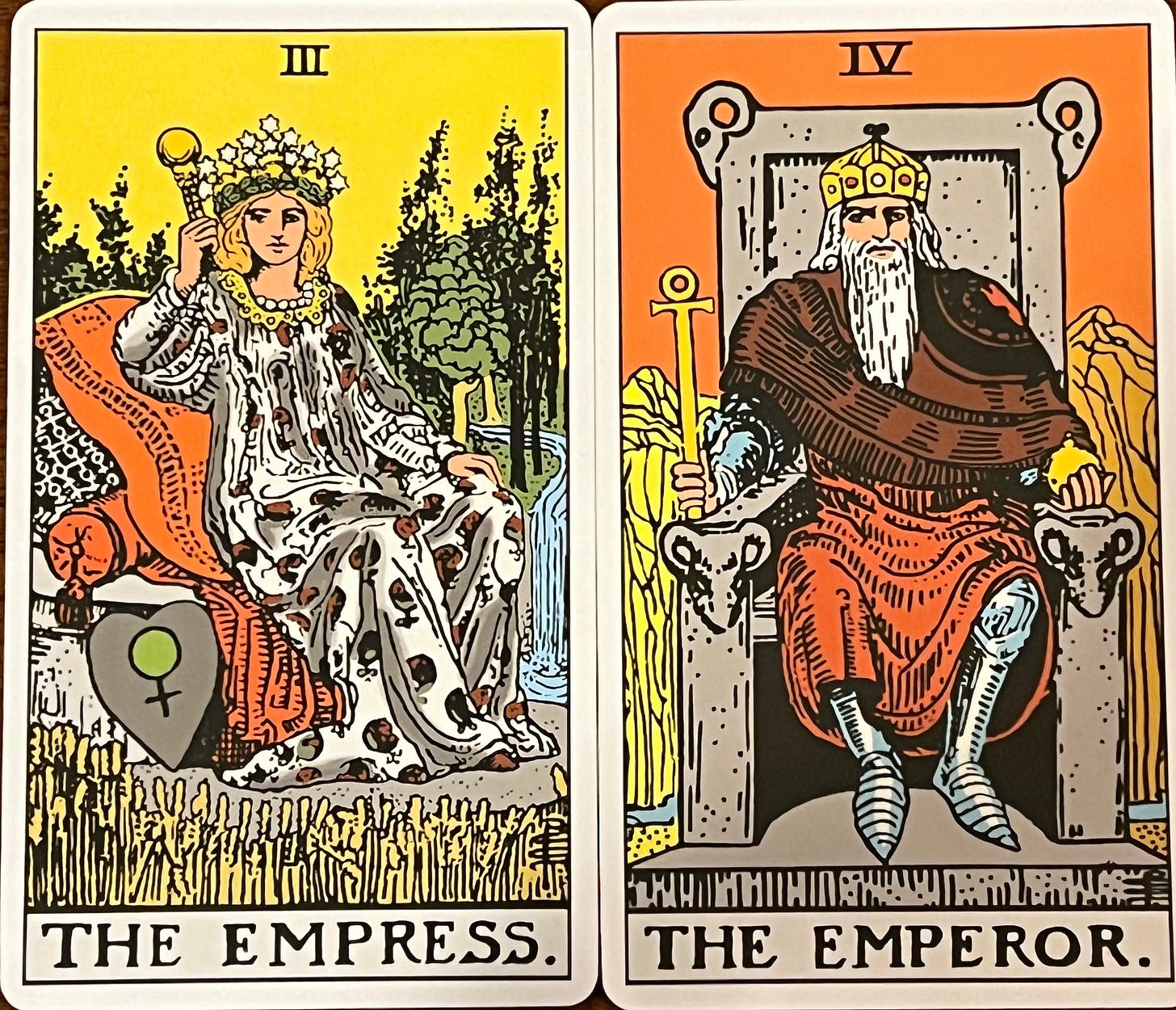
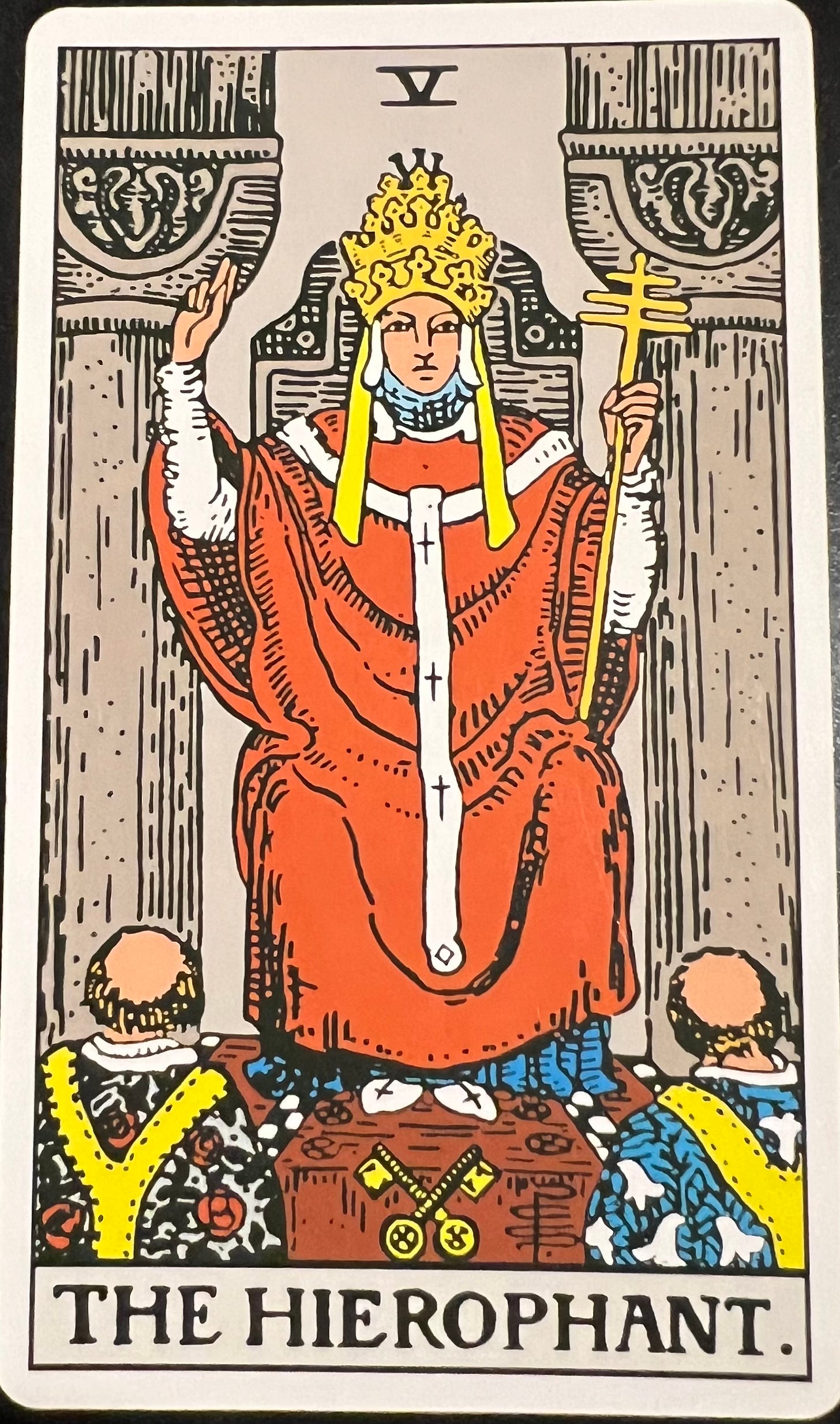
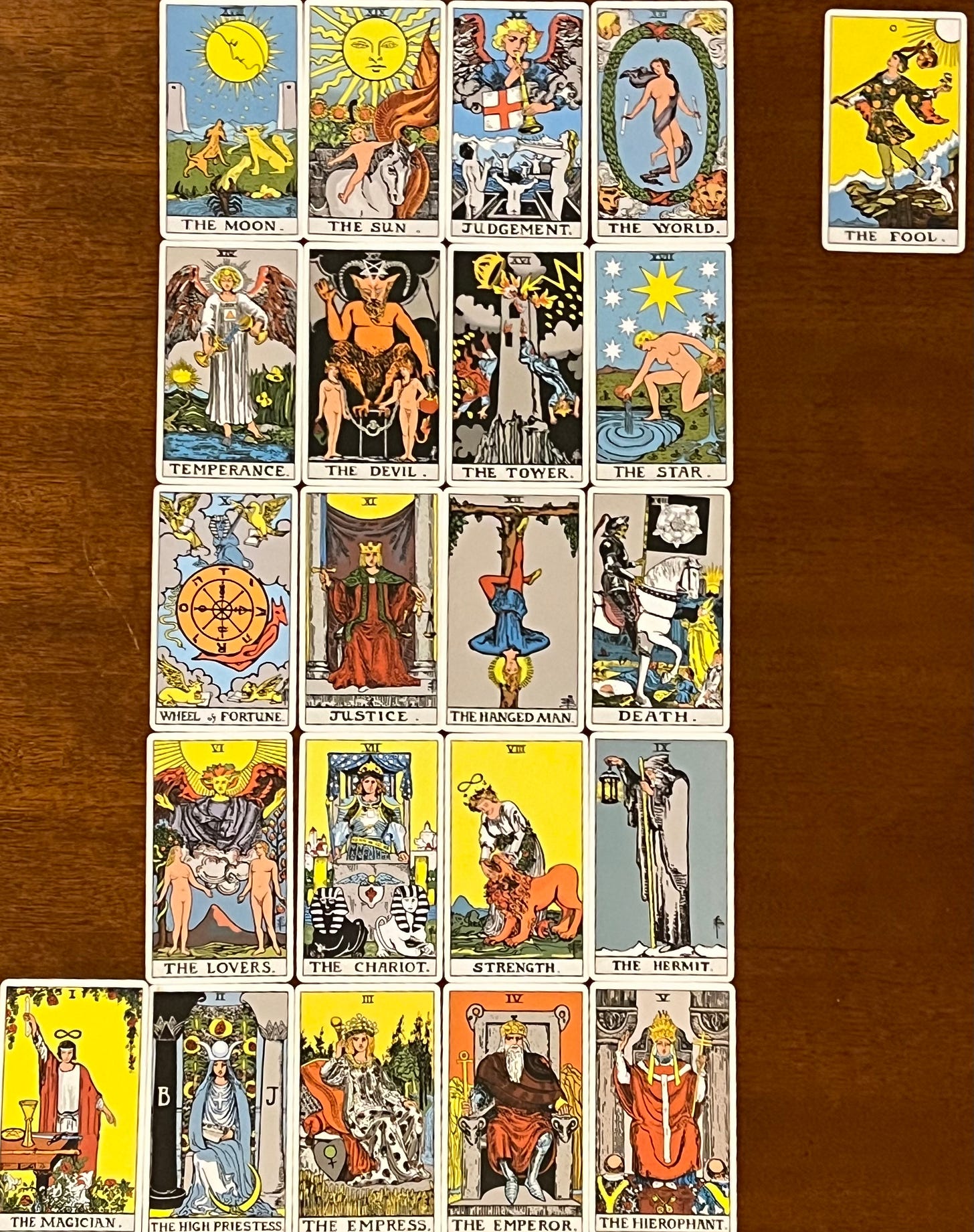
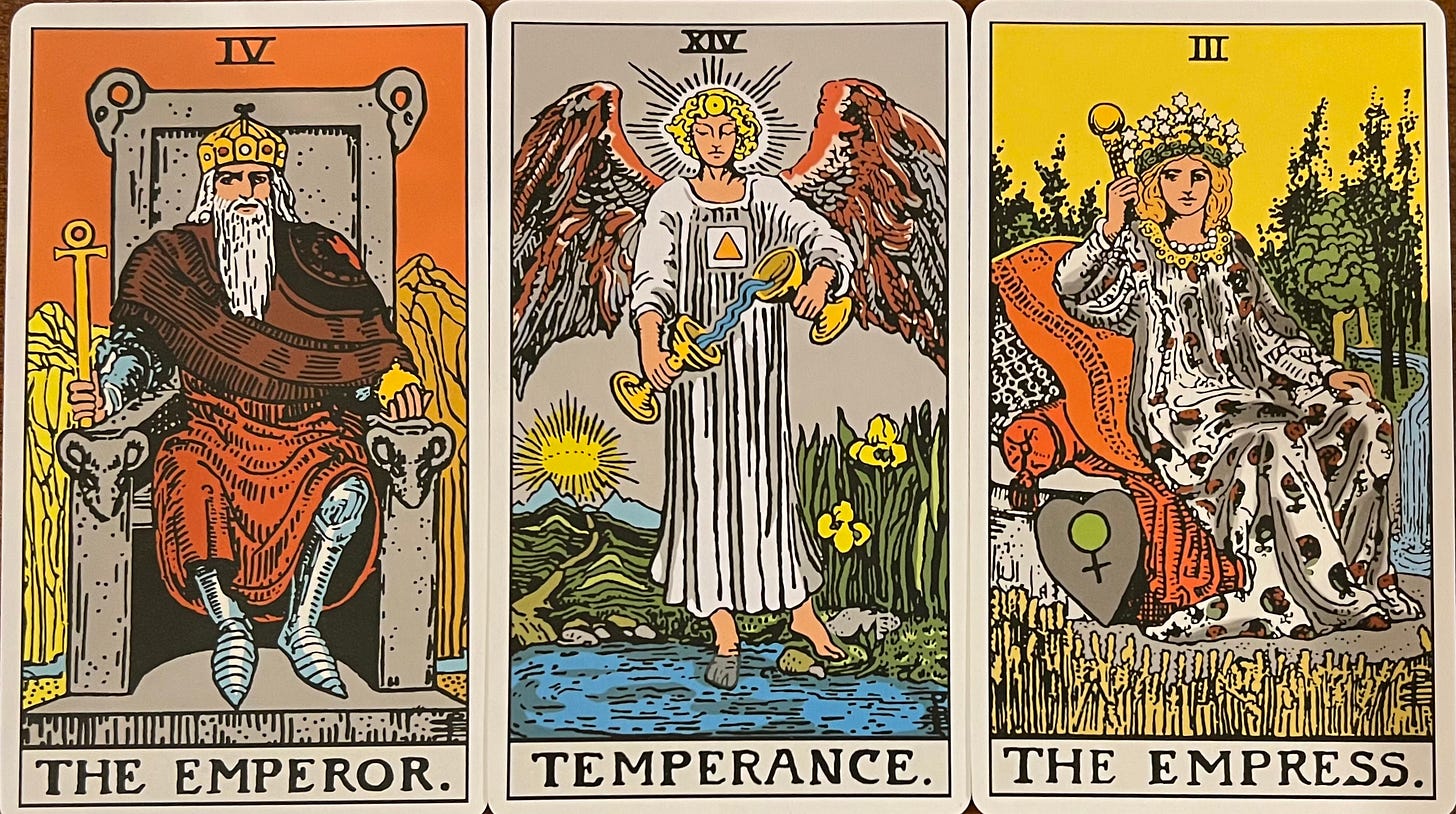
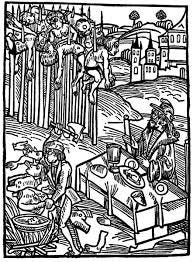
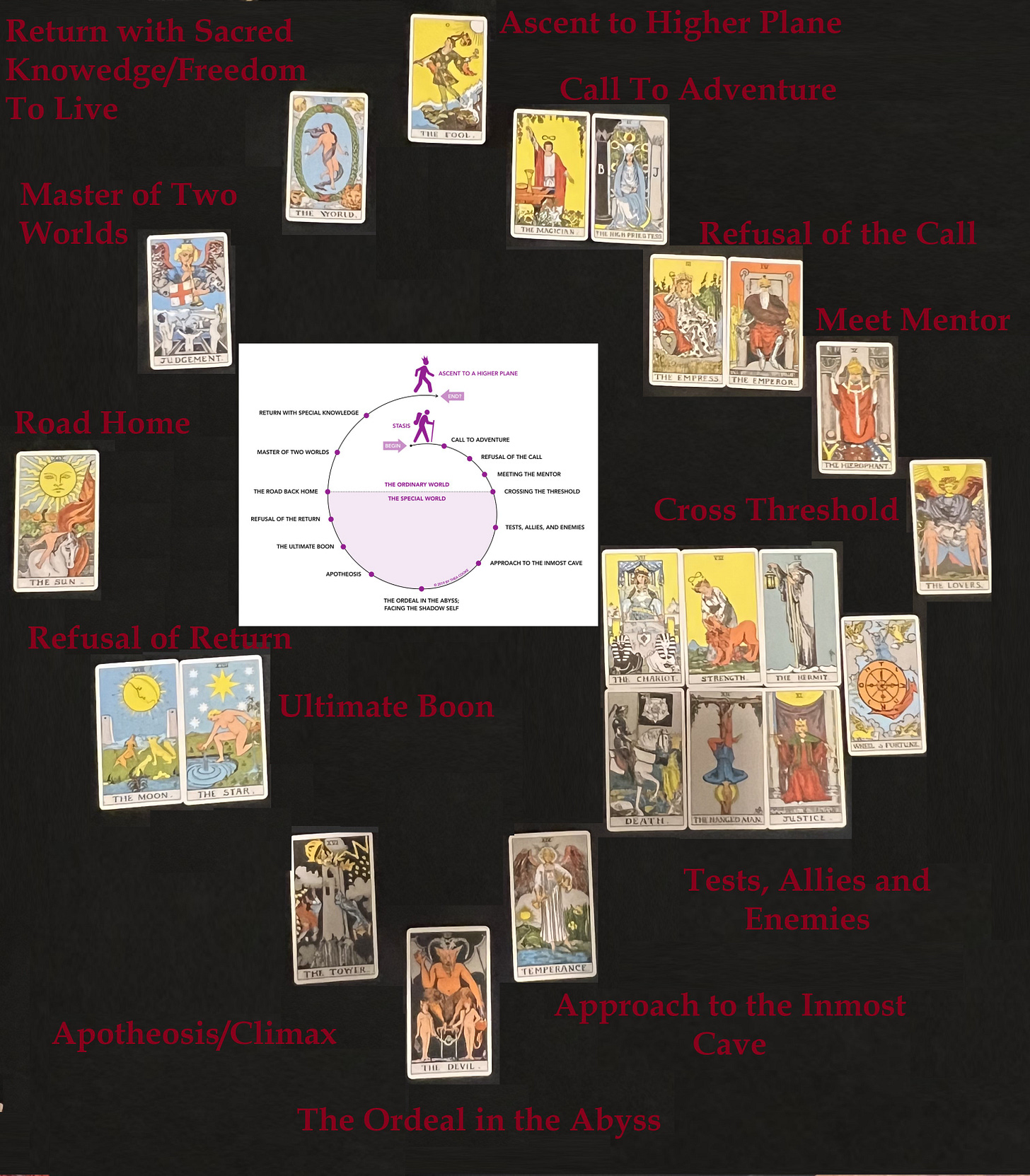


You have a serious hole here......
I appreciate the Rider's deck, but the only one that I ever used is the Crowley Deck.
The book you need to read to fully appreciate it is:
The Book of Thoth
https://www.amazon.ca/Book-Thoth-Egyptian-Tarot/dp/0877282684/
You can thank me later 😉
Loved your analysis with the fusion of politics and Tarot.